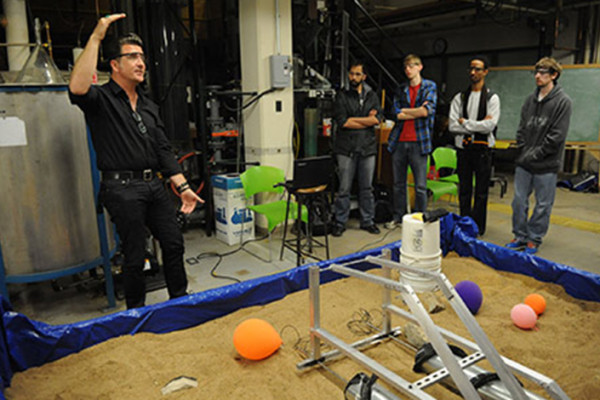Robots on Mars
Before his Assembly Series talk, Adam Steltzner, a NASA engineer in charge of the Mars Curiosity rover landing, met with WUSTL students and discussed their entry for NASA’s Robotic Mining Competition.
Military use of robots increases
WUSTL computer scientists who work on robots say the machines still need the human touch.War casualties are typically kept behind tightly closed doors, but one company keeps the mangled pieces of its first casualty on display. This is no ordinary soldier, though — it is Packbot from iRobot Corporation. Robots in the military are no longer the stuff of science fiction, and WUSTL’s Doug Few and Bill Smart are on the cutting edge of this new wave of technology. Few and Smart report that the military goal is to have approximately 30% of the Army comprised of robotic forces by approximately 2020.
Lewis the robot, now a ‘grad student,’ wins award
Lewis’ amazing achievements gave WUSTL the Robot Challenge Championship Award and the Ben Wegbreit Award for Integration of AI.
Lewis the robot eyes future in wedding photography
Lewis the robotic photographerMay and June are prom, graduation and wedding months, times when the family camera gets a steaming workout. Computer scientists at Washington University in St. Louis can take that camera out of your designated photographer’s hands and perch it atop Lewis, a five-foot tall, 300-pound robot that wanders through a space taking pictures of people. Named after Meriwether Lewis of Lewis and Clark fame (for his traveling ways), Lewis is the creation of William D. Smart, Ph.D., and Cindy M. Grimm, Ph.D., assistant professors of computer science at Washington University, and is considered to be the world’s first robotic photographer.

